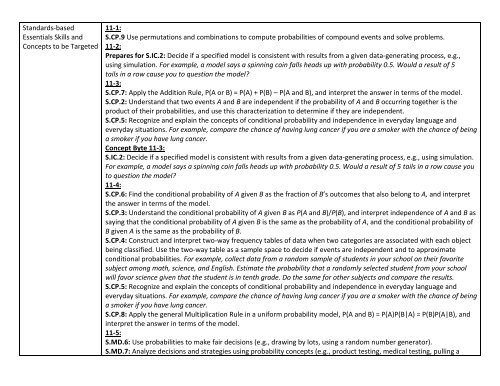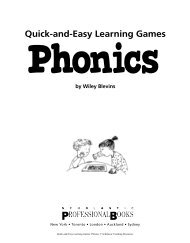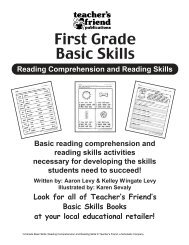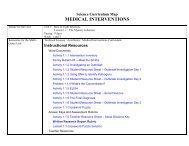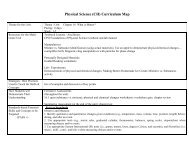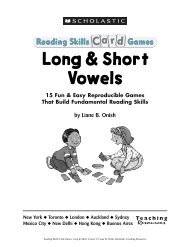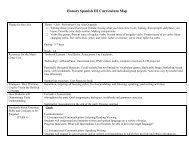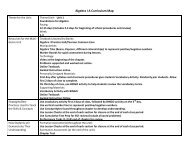Algebra II Curriculum Map - Claremore Public Schools
Algebra II Curriculum Map - Claremore Public Schools
Algebra II Curriculum Map - Claremore Public Schools
Create successful ePaper yourself
Turn your PDF publications into a flip-book with our unique Google optimized e-Paper software.
Standards-basedEssentials Skills andConcepts to be Targeted11-1:S.CP.9 Use permutations and combinations to compute probabilities of compound events and solve problems.11-2:Prepares for S.IC.2: Decide if a specified model is consistent with results from a given data-generating process, e.g.,using simulation. For example, a model says a spinning coin falls heads up with probability 0.5. Would a result of 5tails in a row cause you to question the model?11-3:S.CP.7: Apply the Addition Rule, P(A or B) = P(A) + P(B) – P(A and B), and interpret the answer in terms of the model.S.CP.2: Understand that two events A and B are independent if the probability of A and B occurring together is theproduct of their probabilities, and use this characterization to determine if they are independent.S.CP.5: Recognize and explain the concepts of conditional probability and independence in everyday language andeveryday situations. For example, compare the chance of having lung cancer if you are a smoker with the chance of beinga smoker if you have lung cancer.Concept Byte 11-3:S.IC.2: Decide if a specified model is consistent with results from a given data-generating process, e.g., using simulation.For example, a model says a spinning coin falls heads up with probability 0.5. Would a result of 5 tails in a row cause youto question the model?11-4:S.CP.6: Find the conditional probability of A given B as the fraction of B’s outcomes that also belong to A, and interpretthe answer in terms of the model.S.CP.3: Understand the conditional probability of A given B as P(A and B)/P(B), and interpret independence of A and B assaying that the conditional probability of A given B is the same as the probability of A, and the conditional probability ofB given A is the same as the probability of B.S.CP.4: Construct and interpret two-way frequency tables of data when two categories are associated with each objectbeing classified. Use the two-way table as a sample space to decide if events are independent and to approximateconditional probabilities. For example, collect data from a random sample of students in your school on their favoritesubject among math, science, and English. Estimate the probability that a randomly selected student from your schoolwill favor science given that the student is in tenth grade. Do the same for other subjects and compare the results.S.CP.5: Recognize and explain the concepts of conditional probability and independence in everyday language andeveryday situations. For example, compare the chance of having lung cancer if you are a smoker with the chance of beinga smoker if you have lung cancer.S.CP.8: Apply the general Multiplication Rule in a uniform probability model, P(A and B) = P(A)P(B|A) = P(B)P(A|B), andinterpret the answer in terms of the model.11-5:S.MD.6: Use probabilities to make fair decisions (e.g., drawing by lots, using a random number generator).S.MD.7: Analyze decisions and strategies using probability concepts (e.g., product testing, medical testing, pulling a


